Personality and Temperament
The Manx is one of a few tailless cat breeds, yet it’s probably the best-known as it is more widespread than Kurilian Bobtail and Japanese Bobtail cats, which share some similarities. Depending on location and registry, these cats might have long or short hair in a variety of different colors - and it’s worth noting that some purebred cat registries refer to long-haired Manx cats as Cymric cats.
While the Manx cat breed standard requires show quality animals to be either tailless or nearly tailless, pet quality Manx cats may have slightly longer tails. In fact, there are a few nicknames for Manx cats with different tail lengths. “Rumpy” manx cats are completely tailless, while “rumpy risers” have small stubs. “Stumpy” manx cats have partial tails, and a manx with a nearly full length tail is called a "Longy."
Social and intelligent, members of the Manx family are often compared to dogs thanks to their high play drive and their tendency to develop strong bonds with their human friends and animal companions alike.
These cats are incredibly athletic, with powerful hind legs. Their ability to jump to great heights means that their families often find them peering down from the highest cupboard in the kitchen, or perhaps from the top of the refrigerator.
Not only do Manx cats enjoy high jumps, they have an intense sense of curiosity. Their agile paws easily jiggle open latches and the drawer pulls, enabling access to small areas filled with your most fascinating belongings.
If you bring a Manx into your life, don't be surprised if you find them following you to the shower, where they'll hide behind the curtain or door and reach in to catch droplets with their paws. Perhaps because of their island origins, Manx cats have a tendency to like water – unless, that is, you're attempting to bathe them!
Fantastic personalities make Manx cats outstanding companions for nearly any family - and adorable, unusual looks make them even more fun to spend time with.
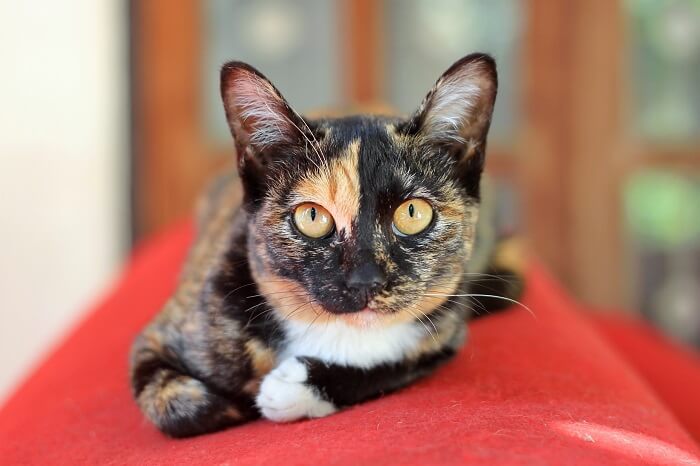

Care
Nutrition
Grooming
Exercise
Health
Manx cats have no special dietary needs; however, it is best to offer a high-quality diet that includes real meat or fish as the number one ingredient.
Shorthaired Manx cats require brushing just once or twice per week to remove excess hair. If you have a long-haired Manx, plan to brush them at least once per day to prevent mats from forming in their fine undercoat.
As the Manx is prone to jumping and climbing with great vigor, you may wish to keep their claws trimmed short as a method of providing some protection for your belongings.
One more thing: Just like other breeds, Manx cats benefit from at home dental care. Consider teaching your kitten to accept toothbrushing from a young age.
The Manx typically displays incredible athletic prowess, running at high speeds, leaping to the highest possible heights, and climbing anything that happens to be available. Tall cat towers, scratching posts, and a wide variety of toys can help satisfy your cat's play drive. Since Manx cats appreciate interactive play, look for toys that let you be part of the action, too!
Many Manx cats enjoy excellent health, however the breed is prone to certain issues including a birth defect called Manx syndrome. Manx syndrome is a spinal abnormality that affects the central nervous system, causing issues such as constipation, incontinence, and hind leg paralysis.
The Manx has a higher than average risk of Feline Lower Urinary Tract Diseases including bladder stones.
Skeletal malformations can occur as well, sometimes leading to major problems and sometimes simply affecting the cat's gait. If your cat has a malformation, it’s possible that they will ultimately need some help managing arthritis symptoms as they get older.
History
The Manx cat originated on the Isle of Man, located in the Irish Sea. There, members of the breed were originally referred to as "stubbin" cats, a term that some locals continue to use today.
Like all domestic cats, the Manx is a descendent of the African wildcat (Felis lybica). The first domestic cats to arrive on the Isle of Man probably had long tails, but one or more had to be carrying the dominant gene that causes natural, tailless mutation. The spontaneous mutation that causes Manx cats to be born without tails became more common on the Isle of Man due to a lack of genetic diversity over time.
These unique cats were a bit of a curiosity when they were first exhibited in cat shows during the late 1800s. The first Manx cat breed standard was developed in 1903, and the breed has the distinction of being among the first breeds to be officially recognized by the Cat Fanciers Association. Its Manx registry records go back to the 1920s.
Today, all major cat registries accept Manx cats, and responsible breeders frequently outcross with tailed domestic cats to enhance genetic diversity and continue improving the breed.
Four other breeds have been developed using Manx cats as foundation stock. These include the Isle of Man shorthair, the Isle of Man longhair, the Tasman Manx, and the Cymric cat.


Eyes
Legs & Paws
Tail
The Breed Standard
Body
Head
Ears
Coat
Color
FAQ
How much does a Manx cat cost?
Manx cats cost between $500-$1,500.
How big do Manx cats get?
Manx cats tend to be medium in size. A fully grown Manx cat might weigh between 7-13 pounds or more and range in height anywhere from about 10"-14" inches tall.
How long do Manx cats live?
The Average lifespan for Manx is 12-16 years.
Do Manx cats shed?
Manx are short-haired cats. Therefore, they do not shed as much as long-haired cat breeds.
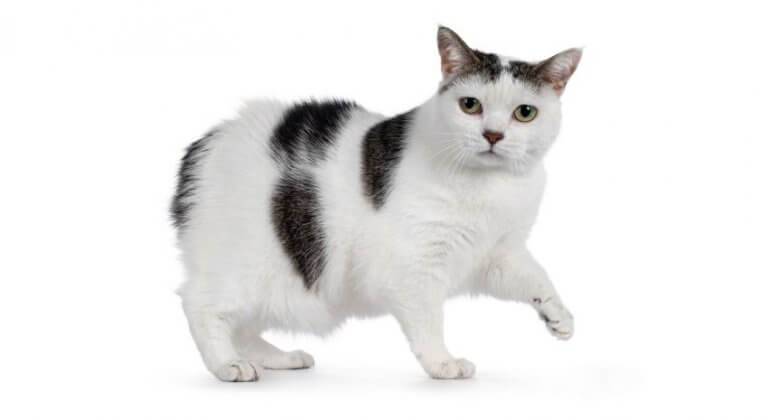



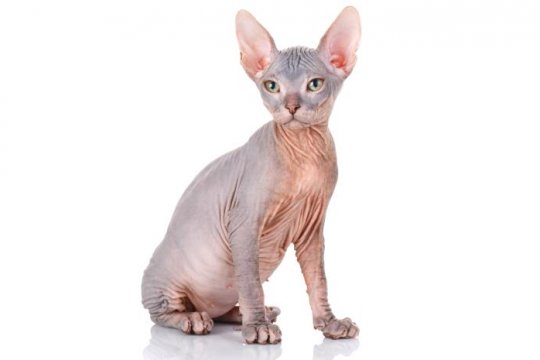

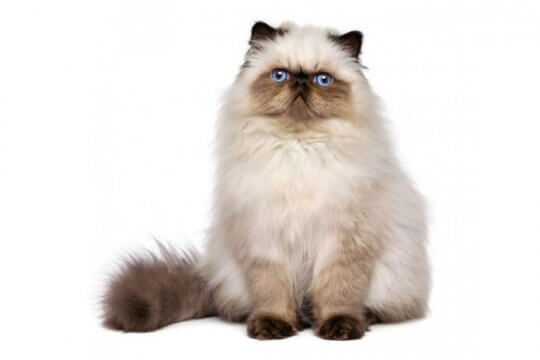

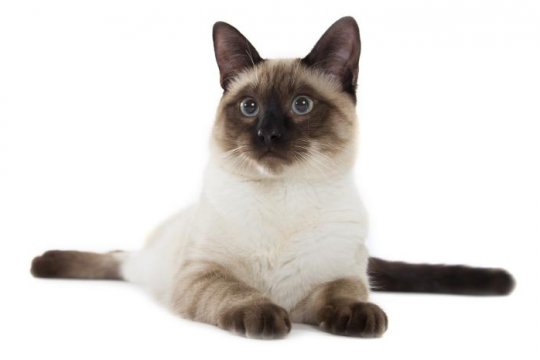
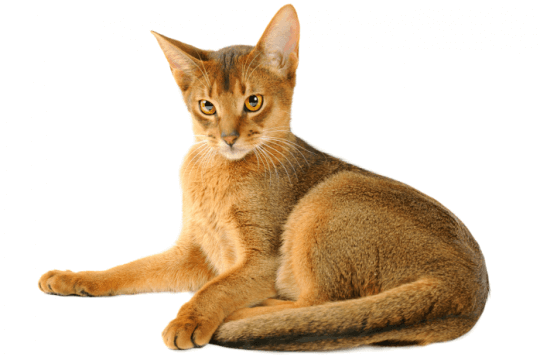






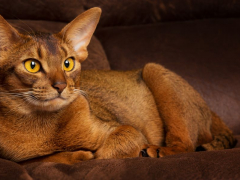

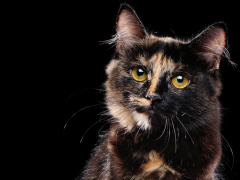




My husband’s family had a manx. We were never sure if the tail was docked or this was a real breed. We always laughed when she held of two racoons who were trying to get 2 hot dogs left on the grill after it had cooled off…Itsy Bitsy who was NOT Itsy at all , and could not jump up on the grill herself , but she wasn’t allowing either or both of them to get her hot dogs…They finally left and she got the hot dogs in the morning when we came down for breakfast….
I love my manx boy. Coolest cat ever. Very social. If you’re cool, you’re in his pride. He likes cool people, cool cats and cool dogs.
My manx is a silver tabby stumpy. He is intelligent, social, and very loving. He loves to catnap on my lap. We also have a beagle hound that “Bob” is affectionate of. Bob rubs against her and head butts her to get her attention. Bob will initiate a game of chase, run around a tree stump a couple of times then jump up onto the tree stump and watch the beagle go round and round the tree stump with her nose to the ground “trailing” Bob’s scent. He seems to have a “Garfield” like smurk on his face while he watches the crazy dog going round in circles looking for him.
Hi Willie, thank you for sharing! Bob sounds like a delight.
I went to get one of my Granddaughters kittens, i was so surprised to find out they were manx. I just love them, I had three births Tuesday. One of the is white but they have long tails. I love their personality!
Thanks for sharing!
I’m pretty sure my son has a Manx . Mikey is a 2 year old tuxedo cat from a tuxedo bob tail stray Mom adopted my son’s friends. The stray Mom had 7 kittens and Mikey was a tuxedo bobtail as well.
He has really round eyes, bobtail, back legs longer from the front so that when he runs he hops like a rabbit and he prefers wet food to dry food though he does like some dry treats. He’s very affectionate though he doesn’t stay long when he’s picked up. He’s two now and weighs about 11 pounds.
Does anyone know where I can get a pedigree Manx cat from. I live in Australia having trouble locating one..
Hi Chris, I had trouble finding this as well—some of these Facebook groups might help you to connect with people who know more.
Manx Cats and Kittens Australia
Manx Cats and Kittens For Rehoming and Rescue
Hope this helps, and I wish you all the best!
I rescued a stray yellow Manx kitten a couple of months ago. She was living under a trailer with her mama. I was told her littermates all disappeared. I found a home for mama and kept the kitten because I so quickly fell in love with her. She follows me everywhere, loves the dog and other cat, is curious about everything and seems to very much enjoy interactive play. After losing two cats (one cancer, the other congestive heart failure), Allie is helping me heal. She is going to be a wonderful.
Thank you for sharing. I’m glad you found a little friend to help you heal from the loss of your old cats. Take care!
Thank you so much. Recent loss of two hurts. Allie is a joy.
Thanks so much.
I have a Manx cat. I’ve had many cats in my life, but my Manx is the smartest and most affectionate cat I’ve ever had! If you’re looking to get a cat get a Manx. You won’t regret it.
Nice! Thanks for sharing.
I had a manx that lived to be 22. She was the runt of her litter and was abandoned by her mother, which I already owned, under my front porch. We fed her by bottle until she could eat solid food, and even full grown she was maybe five pounds, with no-tail and a dark-brown/light-brown tortoise shell pattern. She was mainly an outside cat, but sometimes came in to take naps and hang out. The garden beds and bushes in front of our home were perfect for blending in with the dirt and catching any prey. She frequently killed voles, birds, and even a squirrel one time, always an excellent hunter even in her advanced age. As for diet, we just fed her normal plain-Jane dry cat food, occasionally cans of soft food, and often fresh raw fish while filleting (local trout, bass, crappie) or cooked chicken when we had it for dinner. Always had a minimal appetite though, her whole life. The only health problems I can think of that she had was a strange boil on her side on time, maybe an infected bug bite or some kind of spider bite. Vet didn’t know what to do with it. It popped and went away on its own, and she ended up coming out fine, that was at age 15 maybe. She occasionally got UTIs, which were treated with antibiotics. She had some problems where her colon would prolapse a bit when she was constipated, but thankfully she let my wife gently push it back in with some baby oil every time. All in all, excellent cat. Good around kids (mine at least), most dogs, used to fight with chickens though. She certainly had an attitude to her. Drew blood from my father-in-law when he tried to pet her, ha. I’ve had many cats of many breeds over the years, at one point we owned almost twenty cats, and I’ve not had a bond or owned one as intelligent as that one in my life.
Thanks for sharing your special story.